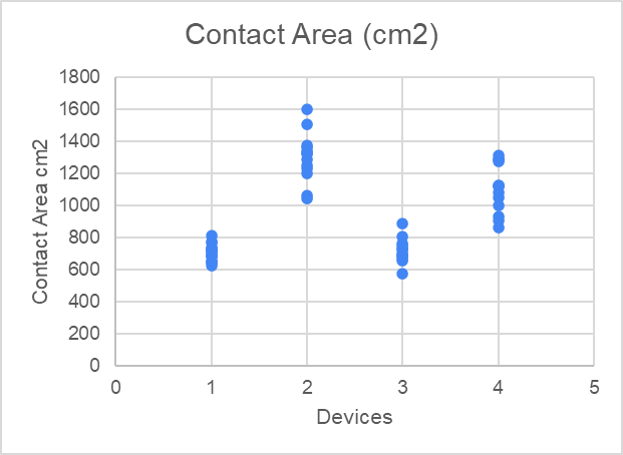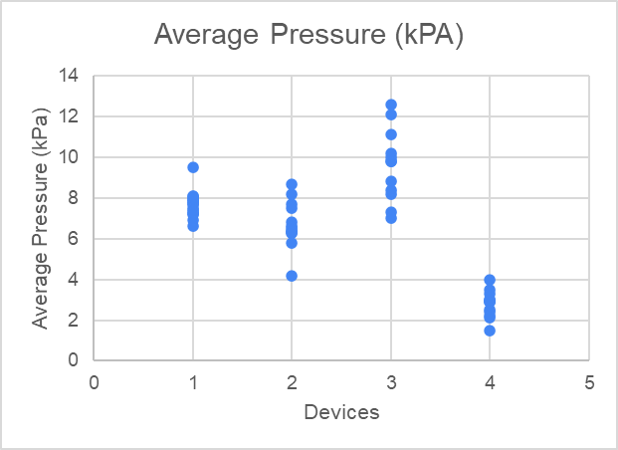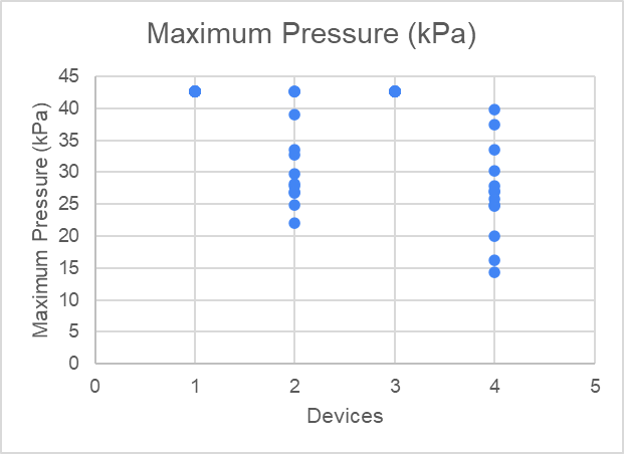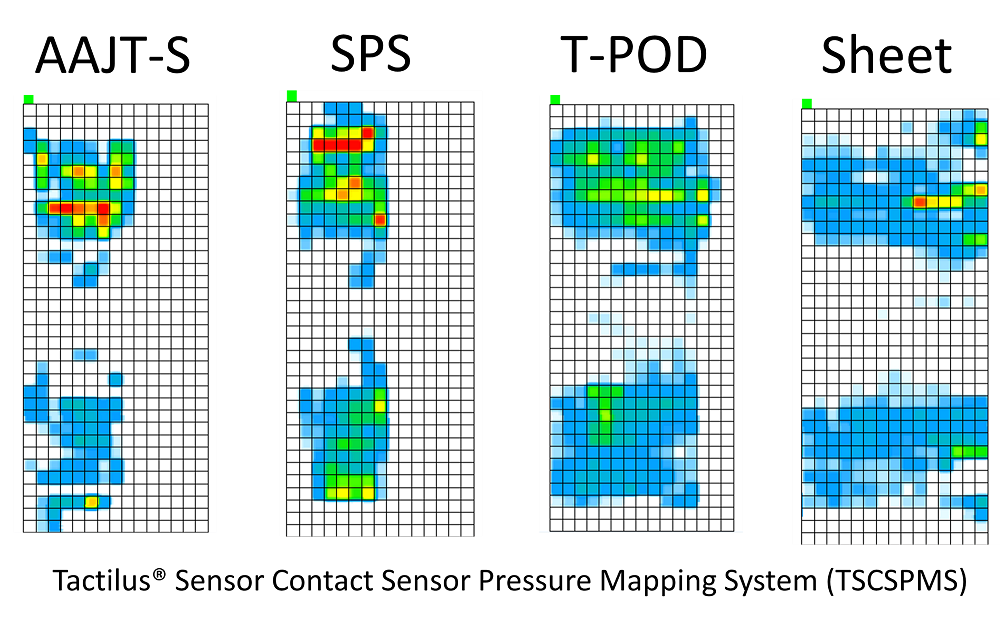Training, Education & Scientific Assembly Meeting
SPECIAL OPERATIONS MEDICAL ASSOCIATION CONFERENCE | 2023
Adequate compression is key to decreasing morbidity/mortality in patients with Pelvic Ring Injuries (PRI). Few studies exist comparing compression profiles of existing junctional/compression devices for PRIs. The following study illustrates the compression profiles of the Abdominal Aortic and Junctional Tourniquet- Stabilized (AAJT-S), the Arrow® T-POD™ Pelvic Stabilization Device, SAM® Pelvic Sling (SPS), and the traditional sheet method and their potential clinical correlations to patients with Pelvic Ring Injuries.
This study is to determine if the pressure profile of the AAJT-S is non-inferior to the traditional sheet pelvic binder, SPS and T-POD when applied for pelvic stabilization purposes. The Tactilus® Sensor Contact Sensor Pressure Mapping System (TSCSPMS) was utilized for pressure mapping using a non-rigid medical mannequin. The Tactilus® Real-Time Surface Pressure Mapping System uses a flexible pressure sensing mat that captures pressure conditions in real time lending higher clinical fidelity during experimental simulation.
The AAJT-S is non-inferior to other FDA approved Pelvic stabilization devices (T-pod and SJT) for the (PRI) stabilization. THE AAJT-S is superior in comparison to the traditional sheet method for stabilization of (PRI). The AAJT-S and SJT are comparable in contact area and not inferior to the T-pod and traditional sheet method in terms of contact area for pelvic stabilization.
The following data points were collected: contact area (cm2), average pressure (kPa), maximum pressure (kPa). One-way Analysis of Variance (ANOVA) was utilized, (Contact area P = 3.331e-16, Average pressure P = 0, Maximum pressure P = 2.22 e-16 ).




Multiple FDA approved devices currently exists as Junctional Tourniquets and for Pelvic Stabilization, but few exist for both purposes. In the Austere environment where weight and resources are important these are key considerations. The AAJT-S has been shown to be an acceptable PRI stabilizer for hemorrhage control on the battlefield, with EMS and in the Emergency Room.
The Abdominal Aortic and Junctional Tourniquet-Stabilized is a capable multiple use device that can be utilized for pelvic ring stabilization for pelvic ring injuries in a variety of settings permitting reduction of redundant equipment.
-Knops et al. Comparison of three different pelvic circumferential compression devices:
a biomechanical cadaver study. J Bone Joint Surg Am. 2011;93(3):230-240. doi:10.2106/JBJS.J.00084
-Parker et al. Pelvic Binder Utilization in Combat Casualties: Does It Matter?.Am
Surg. 2020;86(7):873-877. doi:10.1177/0003134820939928
-Parker et al. Military experience in the management of pelvic fractures from OIF/OEF.BMJ
Mil Health. 2023;169(2):108-111. doi:10.1136/bmjmilitary-2020-001469
-Gordon et al. Pelvic Fracture Care.Mil Med. 2018;183(suppl_2):115-117. doi:10.1093/milmed/usy111